 W
WThe All-Star Squadron is a DC Comics superhero team that debuted in Justice League of America #193 and was created by Roy Thomas, Rich Buckler and Jerry Ordway.
 W
WAmerica vs. The Justice Society is a four-issue comic book mini-series starring the Justice Society of America which was first published by DC Comics between January and April 1985.
 W
WAstonishing Tales is an American anthology comic book series originally published by Marvel Comics from 1970-1976. Its sister publication was Amazing Adventures vol. 2.
 W
W"Atlantis Attacks" was a comic book superhero crossover storyline which ran through most of the summer annuals published by Marvel Comics in 1989.
 W
WThe Avengers is the name of several comic book titles featuring the team the Avengers and published by Marvel Comics, beginning with the original The Avengers comic book series which debuted in 1963.
 W
WCaptain America is the name of several comic book titles featuring the character Captain America and published by Marvel Comics, beginning with the original Captain America comic book series which debuted in 1968.
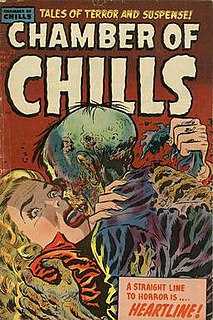 W
WChamber of Chills is the name of two anthology horror comic books, one published by Harvey Publications in the early 1950s, the other by Marvel Comics in the 1970s.
 W
WChamber of Darkness is a horror/fantasy anthology comic book published by the American company Marvel Comics. Under this and a subsequent name, it ran from 1969 to 1974. It featured work by creators such as writer-editor Stan Lee, writers Gerry Conway, Archie Goodwin, and Roy Thomas, and artists John Buscema, Johnny Craig, Jack Kirby, Tom Sutton, Barry Windsor-Smith, and Bernie Wrightson. Stories were generally hosted by either of the characters Digger, a gravedigger, or Headstone P. Gravely, in undertaker garb, or by one of the artists or writers.
 W
WConan the Barbarian was a comics title starring the sword-and-sorcery character created by Robert E. Howard, published by the American company Marvel Comics. It debuted with a first issue cover-dated October 1970 and ran for 275 issues until 1993. A significant commercial success, the title launched a sword-and-sorcery vogue in American 1970s comics.
 W
WDaredevil is the name of several comic book titles featuring the character Daredevil and published by Marvel Comics, beginning with the original Daredevil comic book series which debuted in 1964.
 W
WDC Challenge was a 12-issue comic book limited series produced by DC Comics from November 1985 to October 1986, as a round robin experiment in narrative. The series' tagline was "Can You Solve It Before We Do?"
 W
WDC Comics insert previews were 16-page comic book stories inserted into issues of existing DC Comics series to promote new series usually debuting the next month. Running from 1980 to 1985, they consisted of a front cover, 14 pages of story, and a back cover that depicted the cover of the actual first issue. The addition of the insert did not entail an increase in the price of the comic book, and the cover copy called the insert "a special free 16-page comic!"
 W
WDC Comics Presents is a comic book series published by DC Comics from 1978 to 1986 which ran for 97 issues and four Annuals. It featured team-ups between Superman and a wide variety of other characters in the DC Universe. A recurring back-up feature "Whatever Happened to...?" had stories revealing the status of various minor and little-used characters.
 W
WDC Retroactive is a line of one-shot comic book titles published by DC Comics. It revisited periods of the company's main characters: Batman, Superman, Wonder Woman, Green Lantern, the Justice League, and the Flash. These comics were published with cover dates of September and October 2011. The DC Retroactive comic books followed the Flashpoint events and were launched just before The New 52 line wherein DC titles were relaunched starting from #1.
 W
WDC Special Series was an umbrella title for one-shots and special issues published by DC Comics between 1977 and 1981. Each issue featured a different character and was often in a different format than the issue before it. DC Special Series was published in four different formats: Dollar Comics, 48 page giants, digests, and treasury editions. Neither the umbrella title nor the numbering system appear on the cover; the title "DC Special Series" appeared only on the first page in the indicia. Most issues featured new material, but eight issues were reprints of previously published material.
 W
WThe Defenders are a set of fictional superhero groups with rotating membership appearing in American comic books published by Marvel Comics. They are usually presented as a "non-team" of individualistic "outsiders" who, in their prior adventures, are known for following their own agendas. The team often battle mystic and supernatural threats.
 W
WDracula Lives! was an American black-and-white horror comics magazine published by Magazine Management, a corporate sibling of Marvel Comics. The series ran 13 issues and one Annual from 1973 to 1975, and starred the Marvel version of the literary vampire Dracula.
 W
WEpic Illustrated was a comics anthology in magazine format published in the United States by Marvel Comics. Similar to the US-licensed comic book magazine Heavy Metal, it allowed explicit content to be featured, unlike the traditional American comic books of that time bound by the restrictive Comics Code Authority, as well as offering its writers and artists ownership rights and royalties in place of the industry-standard work for hire contracts. The series lasted 34 issues from Spring 1980–February 1986.
 W
WFantastic Four is the name of several comic book titles featuring the team Fantastic Four and published by Marvel Comics, beginning with the original Fantastic Four comic book series which debuted in 1961.
 W
WHeroes Against Hunger is a 1986 all-star benefit comic book for African famine relief and recovery. Published by DC Comics in the form of a "comic jam," or exquisite corpse, the book starred Superman and Batman. Spearheaded by Jim Starlin and Bernie Wrightson, all proceeds from the comic went to hunger relief in Africa.
 W
WThe Incredible Hulk is an ongoing comic book series featuring the Marvel Comics superhero the Hulk and his alter ego Dr. Bruce Banner. First published in May 1962, the series ran for six issues before it was cancelled in March 1963, and the Hulk character began appearing in Tales to Astonish. With issue #102, Tales to Astonish was renamed to The Incredible Hulk in April 1968, becoming its second volume. The series continued to run until issue #474 in March 1999 when it was replaced with the series Hulk which ran until February 2000 and was retitled to The Incredible Hulk's third volume, running until March 2007 when it became The Incredible Hercules with a new title character. The Incredible Hulk returned in September 2009 beginning at issue #600, which became The Incredible Hulks in November 2010 and focused on the Hulk and the modern incarnation of his expanded family. The series returned to The Incredible Hulk in December 2011 and ran until January 2013, when it was replaced with The Indestructible Hulk as part of Marvel's Marvel NOW! relaunch.
 W
WIron Man is the name of several comic book titles featuring the character Iron Man and published by Marvel Comics, beginning with the original Iron Man series that debuted in 1968.
 W
WIron Man and Sub-Mariner is a one-shot comic book published by Marvel Comics in 1968. It is notable for being the first Marvel title to be intentionally published for only one issue, as it existed to use up two half-length stories left over after Marvel began its expansion and the characters were to be given their own solo titles.
 W
WThe "Kree–Skrull War" is a story arc that was written by Roy Thomas, and drawn by Sal Buscema, Neal Adams, and John Buscema. The story was originally published in the Marvel Comics comic book title Avengers #89–97.
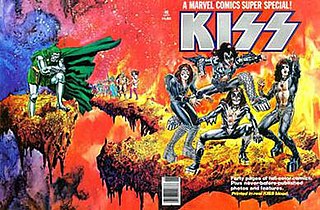 W
WMarvel Comics Super Special was a 41-issue series of one-shot comic-magazines published by Marvel Comics from 1977 to 1986. They were cover-priced $1.50 to $2.50, while regular color comics were priced 30 cents to 60 cents, Beginning with issue #5, the series' title in its postal indicia was shortened to Marvel Super Special. Covers featured the title or a variation, including Marvel Super Special, Marvel Super Special Magazine, and Marvel Weirdworld Super Special in small type, accompanied by large logos of its respective features.
 W
WMarvel Feature was a comic book showcase series published by Marvel Comics in the 1970s. It was a tryout book, intended to test the popularity of characters and concepts being considered for their own series. The first volume led to the launch of The Defenders and Marvel Two-in-One, while volume two led to an ongoing Red Sonja series.
 W
WMarvel Graphic Novel (MGN) is a line of graphic novel trade paperbacks published from 1982 to 1993 by Marvel Comics. The books were published in an oversized format, 8.5" x 11", similar to French albums. In response, DC Comics established a competitor line known as DC Graphic Novel.
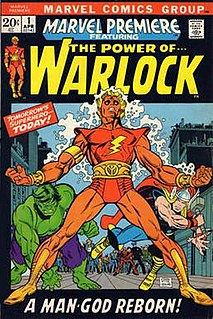 W
WMarvel Premiere is an American comic book anthology series that was published by Marvel Comics. In concept it was a tryout book, intended to determine if a character or concept could attract enough readers to justify launching their own series, though in its later years it was also often used as a dumping ground for stories which could not be published elsewhere. It ran for 61 issues from April 1972 to August 1981. Contrary to the title, the majority of the characters and concepts featured in Marvel Premiere had previously appeared in other comics.
 W
WMarvel Preview is a black-and-white comics magazine published by Magazine Management for 14 issues and the affiliated Marvel Comics Group for 10 issues. The final issue additionally carried the imprint Marvel Magazines Group.
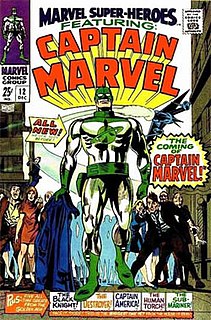 W
WMarvel Super-Heroes is the name of several comic book series and specials published by Marvel Comics.
 W
WMarvel Team-Up is an American comic book series published by Marvel Comics. The series featured two or more Marvel characters in one story. The series was originally published from March 1972 through February 1985, and featured Spider-Man as the lead "team-up" character in all but ten of its 150 issues, and in six of its seven Annuals. It was the first major ongoing spin-off series for Spider-Man, being preceded only by the short-lived The Spectacular Spider-Man magazine. Of the issues that did not star Spider-Man, the Human Torch headlines six issues ; the Hulk, four ; and Aunt May, one (#137). Publication of most of the issues starring the Human Torch coincided with that of Giant-Size Spider-Man, an alternate Spider-Man "team-up"-themed series by the regular Marvel Team-Up creative team. When cancelled with #150 in 1985, the title was replaced by Web of Spider-Man.
 W
WMarvel Two-in-One is an American comic book series published by Marvel Comics featuring Fantastic Four member the Thing in a different team-up each issue.
 W
W"Operation: Galactic Storm" is a 19-part comic book crossover storyline which ran through Marvel Comics' Avengers related titles - Avengers, Avengers West Coast, Captain America, Iron Man, Thor, Wonder Man, and Quasar - between March and May 1992.
 W
WThe Savage Sword of Conan was a black-and-white magazine-format comic book series published beginning in 1974 by Curtis Magazines, an imprint of American company Marvel Comics, and then later by Marvel itself. Savage Sword of Conan starred Robert E. Howard's most famous creation, Conan the Barbarian, and has the distinction of being the longest-surviving title of the short-lived Curtis imprint.
 W
WSavage Tales is the title of three American comics series. Two were black-and-white comics-magazine anthologies published by Marvel Comics, and the other a color comic book anthology published by Dynamite Entertainment.
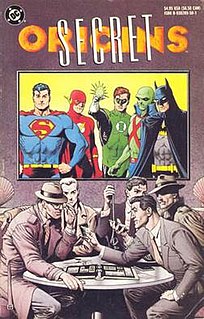 W
WSecret Origins is the title of several comic book series published by DC Comics which featured the origin stories of the publisher's various characters.
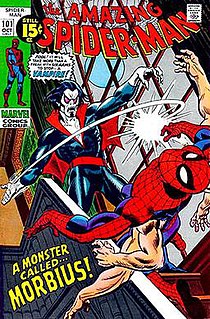 W
W"The Six Arms Saga" is a story arc featuring the popular Marvel Comics character Spider-Man, written by Stan Lee and drawn by Gil Kane. It spans the issues The Amazing Spider-Man #100–102 (1971) and features the first appearance and origin story of Morbius, the Living Vampire. The story arc is mostly remembered for Spider-Man growing four extra arms.
 W
WStan Lee Meets... was a limited series published by Marvel Comics in which comic book writer Stan Lee meets one of the characters he has created in each issue. The series was written by Stan Lee himself and was released to celebrate his 65th year as a Marvel Comics employee. The series is noted for its tongue-in-cheek humor and the comic book characters' general dislike of Stan Lee. Over the course of the five issues, Lee meets Spider-Man, the Thing, Doctor Doom, Doctor Strange and the Silver Surfer. Each issue also contained reprints of issues from each character's respective comic. A special issue in which Lee meets Professor X and Magneto was included with the DVD edition of X-Men: The Last Stand.
 W
WStar Wars is a comic book series published by Marvel Comics from April 12, 1977 to May 27, 1986. Featuring classic Star Wars characters Luke Skywalker, Princess Leia, Han Solo, Chewbacca, C-3PO, and R2-D2, the first six issues adapt the May 1977 film Star Wars. The series chronicled their subsequent adventures for 107 issues and three annuals, including a six-issue adaptation of the 1980 sequel film The Empire Strikes Back in 1980–1981.
 W
WStar Wars comics have been produced by various comic book publishers since the debut of the 1977 film Star Wars. Marvel Comics launched an eponymous series in 1977 which began with a six-issue comic adaptation of the film and ran for 107 issues, included an adaptation of The Empire Strikes Back. Marvel also released an adaptation of Return of the Jedi and spin-offs based on Droids and Ewoks. A self-titled comic strip ran in American newspapers between 1979 and 1984. Blackthorne Publishing released a three-issue run of 3-D comics from 1987 to 1988.
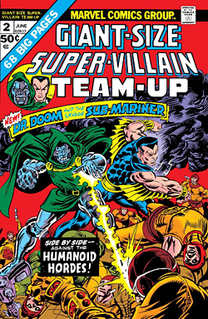 W
WSuper-Villain Team-Up is the name of two American comic book series published by Marvel Comics. Both series featured supervillains as the protagonists.
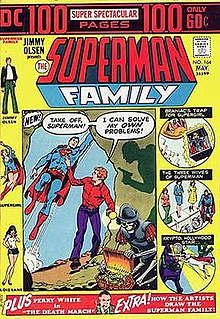 W
WThe Superman Family was an American comic book series published by DC Comics from 1974 to 1982 featuring supporting characters in the Superman comics. The term "Superman Family" is often used to refer to the extended cast of characters of comics books associated with Superman. A similarly titled series, Superman Family Adventures, was published in 2012–2013.
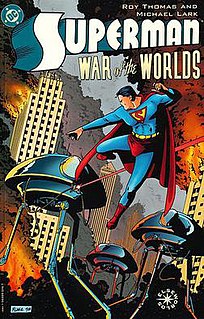 W
WSuperman: War of the Worlds is a DC Comics Elseworlds comic story, published in 1998. Written by Roy Thomas with Michael Lark as the artist. The story is a rough adaptation of the H. G. Wells 1898 novel The War of the Worlds, but is primarily based on the Superman mythology. Wells' story is transported from early 20th century Britain to Metropolis in 1938, where the Martian invasion is met with a Golden Age-style Superman who is not blessed with the full range of powers that he typically has in modern comics.
 W
WTales of Suspense is the name of an American comic book anthology series and two one-shot comics published by Marvel Comics. The first, which ran from 1959 to 1968, began as a science-fiction anthology that served as a showcase for such artists as Jack Kirby, Steve Ditko, and Don Heck, then featured superheroes Captain America and Iron Man during the Silver Age of Comic Books before changing its title to Captain America with issue #100. Its sister title was Tales to Astonish. Following the launch of Marvel Legacy in 2017, Tales of Suspense was once again resurrected at issue #100, featuring the Winter Soldier and Hawkeye in a story called "The Red Ledger".
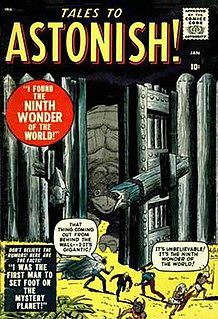 W
WTales to Astonish is the name of two American comic book series and a one-shot comic published by Marvel Comics.
 W
WTarzan, a fictional character created by Edgar Rice Burroughs, first appeared in the 1912 novel Tarzan of the Apes, and then in 23 sequels. The character proved immensely popular and quickly made the jump to other media, including comics.
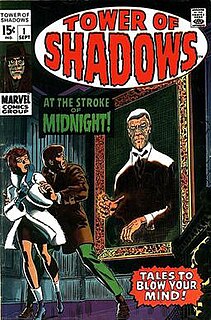 W
WTower of Shadows is a horror/fantasy anthology comic book published by the American company Marvel Comics under this and a subsequent name from 1969 to 1975. It featured work by writer-artists Neal Adams, Jim Steranko, Johnny Craig, and Wally Wood, writer-editor Stan Lee, and artists John Buscema, Gene Colan, Tom Sutton, Barry Windsor-Smith, and Bernie Wrightson.
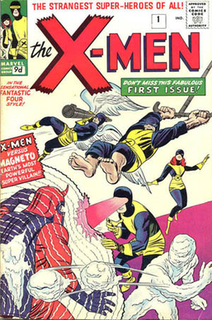 W
WUncanny X-Men, originally published as The X-Men, is an American comic book series published by Marvel Comics since 1963, and is the longest-running series in the X-Men comics franchise. It features a team of superheroes called the X-Men, a group of mutants with superhuman abilities led and taught by Professor X.
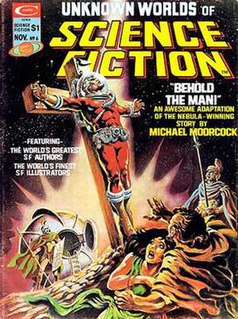 W
WUnknown Worlds of Science Fiction was a 1970s American black-and-white, science fiction comics magazine published by Marvel Comics' parent company, Magazine Management.
 W
WThe West Coast Avengers is a fictional group of superheroes appearing in American comic books published by Marvel Comics. The team first appeared in The West Coast Avengers #1, created by Roger Stern and Bob Hall. It was the first spin-off publication for the Avengers.
 W
WWhat If, sometimes rendered as What If...?, is a series of comic books published by Marvel Comics whose stories explore how the Marvel Universe might have unfolded if key moments in its history had not occurred as they did in mainstream continuity. What If comics have been published in 13 series, as well as many stand-alone issues, since the 1970s.
 W
WWonder Woman is an ongoing American comic book series featuring the DC Comics superhero Wonder Woman and occasionally other superheroes as its protagonist. The character first appeared in All Star Comics #8, later featured in Sensation Comics series until having her own solo title.
 W
WWorld's Finest Comics was an American comic book series published by DC Comics from 1941 to 1986. The series was initially titled World's Best Comics for its first issue; issue #2 switched to the more familiar name. Michael E. Uslan has speculated that this was because DC received a cease and desist letter from Better Publications, Inc., who had been publishing a comic book entitled Best Comics since November 1939. Virtually every issue featured DC's two leading superheroes, Superman and Batman, with the earliest issues also featuring Batman's sidekick, Robin.
 W
WWorlds Unknown was a science-fiction comic book published by American company Marvel Comics in the 1970s, which adapted classic short stories of that genre, including works by Frederik Pohl, Harry Bates, and Theodore Sturgeon.